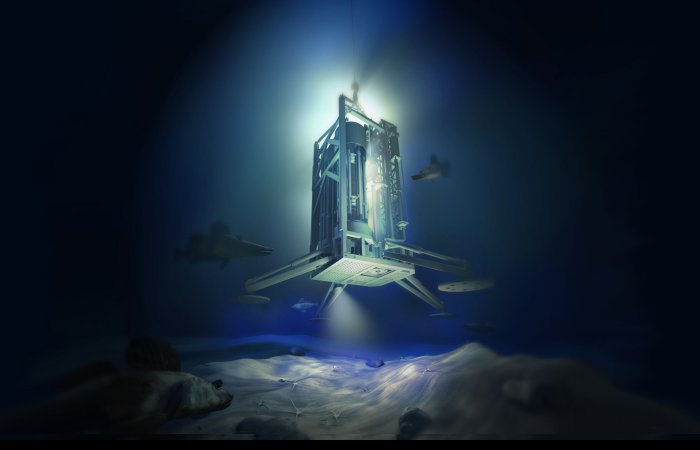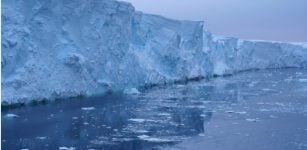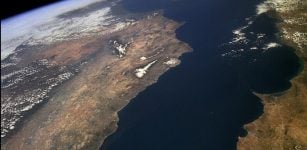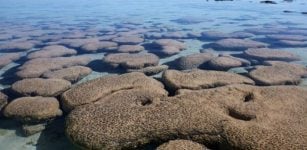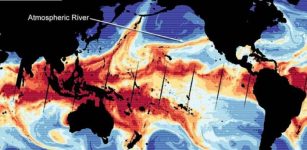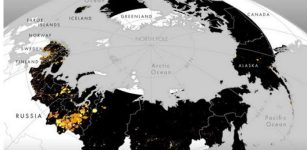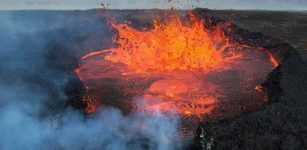Geological Samples Reveal Antarctic Ice Sheet Formation
Eddie Gonzales Jr. – MessageToEagle.com – Global warming is accelerating Antarctic ice melt, especially in West Antarctica. An international research team led by the Alfred Wegener Institute suggests this may be due to the ice’s formation process.
Rendered graphic of the MARUM-MeBo70 landing on the seabed of the Amundsen Sea. Credit: MARUM – Center for Marine Environmental Sciences, University of Bremen / Martin Künsting
Sediment analysis and climate modeling reveal that Antarctica’s permanent glaciation started about 34 million years ago, initially confined to East Antarctica. Ice only reached the West Antarctic coast at least 7 million years later, contrary to previous assumptions of complete continental coverage.
The study in Science shows East and West Antarctica react differently to external forces.
About 34 million years ago, Earth experienced a fundamental climate shift that still affects global conditions: the transition from a greenhouse world (with little to no continental ice) to an icehouse world (with large permanent glaciers).
The Antarctic ice sheet grew during this period. However, details about how, when, and where this occurred remained unclear due to insufficient data and samples, particularly from West Antarctica, which could document past changes.
Researchers from the Alfred Wegener Institute, Helmholtz Centre for Polar and Marine Research (AWI) have now been able to close this knowledge gap, together with colleagues from other universities.
In his study, they used the MARUM-MeBo70 seafloor drill rig off West Antarctica’s Amundsen Sea coast to retrieve a core sample. This allowed them to establish the continent’s early glacial history. Surprisingly, they found no evidence of ice in the region during Antarctica’s first major glaciation phase.
“This means that a large-scale, permanent first glaciation must have begun somewhere in East Antarctica,” says Dr. Johann Klages, geologist at the AWI who led the research team. This is because West Antarctica remained ice-free during this first glacial maximum. At this time, it was still largely covered by dense broadleaf forests and a cool-temperate climate that prevented ice from forming in West Antarctica.
East and West Antarctica respond differently to external factors. To determine where permanent ice first formed in Antarctica, AWI paleoclimate modelers combined new and existing data on temperatures and ice occurrence.
“The simulation confirms the geologists’ core findings, revolutionizing our understanding of Antarctica’s initial glaciation,” according to Prof Dr. Gerrit Lohmann, paleoclimate modeler at the AWI.
The study found that conditions for permanent ice formation existed only in coastal East Antarctic Northern Victoria Land. Moist air met the rising Transantarctic Mountains, creating ideal conditions for snow accumulation and ice cap formation. The ice sheet then rapidly spread into East Antarctica’s interior, reaching West Antarctica later.
“It wasn’t until about seven million years later that conditions allowed for advance of an ice sheet to the West Antarctic coast,” explains Hanna Knahl, a paleoclimate modeler at the AWI, adding that the team’s results “clearly show how cold it had to get before the ice could advance to cover West Antarctica that, at that time, was already below sea level in many parts.”
Researchers closed a knowledge gap using a unique drill core from West Antarctica, retrieved during a 2017 expedition on the research vessel Polarstern. The MARUM-MeBo70 drill rig, developed in Bremen, was used for the first time in Antarctica.
The seabed near West Antarctic Pine Island and Thwaites glaciers is extremely hard, preventing conventional drilling methods from reaching deep sediments. The MARUM-MeBo70’s rotating cutterhead enabled drilling about 10 meters into the seabed to retrieve samples.
Source – AWI
Written by Eddie Gonzales Jr. – MessageToEagle.com Staff Writer

